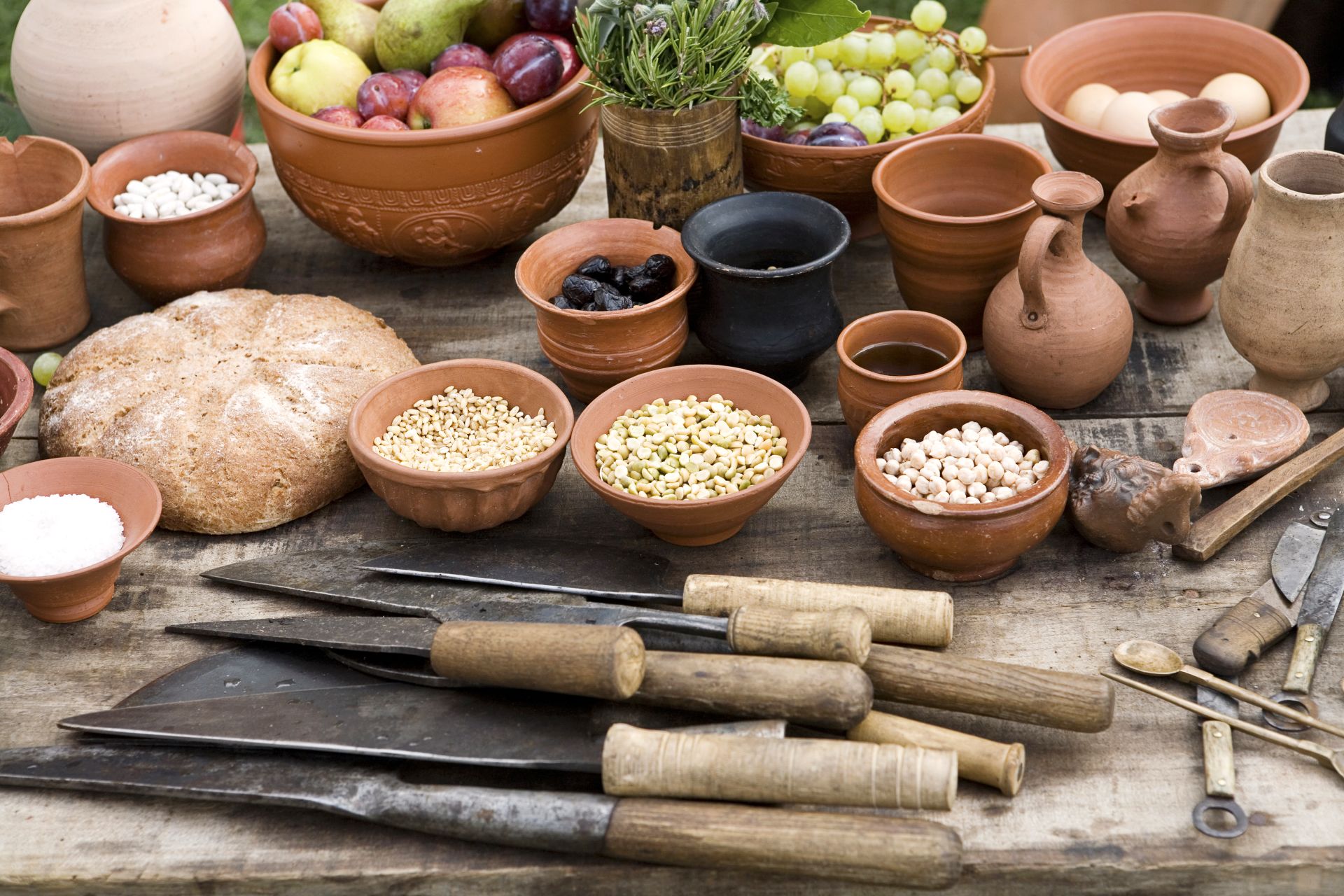Ancient Egypt
Food in Egypt used to be be plain and dull as their main staples were beer and bread. The Egyptians used to cook their dough outside. This caused sand from the desert to flow into their dough, therefore when people ate the bread their teeth would wear down from the gritty sand. The reason why their staple foods were bread and beer was because meat in early civilisations was considered a luxury and only the rich could afford to eat in frequently. The Egyptian’s fruit consisted of melons, dates and figs and pomegranates were considered a luxury also and mostly consumed by the rich. It was better fir the Egyptians to drink wine rather than beer as the beer was made from crumbled barely bread and water so it became lumpy. To make the consistency not lumpy, it had to be drunk through a wooden strainer.
Ancient Greece
Just like the Egyptians, the Greek’s diet mostly consisted of plain foods like bread, however they also had a fair amount of goats cheese in their diets. Ancient Greeks enjoyed a varied diet of vegetables, legumes, and fruit as the mainstay. But, being a coastal country with many islands, fish and seafood were an important part of the diet and animal husbandry and hunting brought meats and game to the menu. However, the consumption of fish and meat varied in accordance with the wealth and location of the household. Tomatoes, peppers, potatoes, and bananas didn’t arrive in Greece until after the discovery of the Americas in the 15th century, because that’s where those foods originated. Also, lemons, oranges, eggplant, and rice arrived later.
Ancient Rome
For the ordinary Roman, their diet started with, ientaculum – breakfast, this was served at day break. A small lunch, prandium, was eaten at around 11am. The cena was the main meal of the day. They may have eaten a late supper called vesperna. Richer citizens in time, freed from the rhythms of manual labour, ate a bigger cena from late afternoon, abandoning the final supper. The cena could be a grand social affair lasting several hours. It would be eaten in the triclinium, the dining room, at low tables with couches on three sides. The fourth side was always left open to allow servants to serve the dishes. Diners were seated to reflect their status. The triclinium would be richly decorated, it was a place to show off wealth and status. Some homes had a second smaller dining room for less important meals and family meals were taken in a plainer oikos.

Chinese Food
The Chinese are credited with inventing chicken noodle soup, pasta and ketchup. According to one story Marco Polo brought noodles back from China and invented spaghetti . Many doubts have been raised about this claim. The word ketchup comes from “ke-tsiap”, a tangy sauce made from pickled fish and spices. In 1982 a group of chefs tried to resurrect some imperial dessert recipes by looking up the last emperor’s brother. Woks were first used more than 2,000 years ago. Their curved shape distributes heat evenly and causes liquid to evaporate quickly.
Aztec Food
The Aztec civilisation, which flourished in the 14th century until the fall of the Aztec Empire in 1519, was a society based around agriculture. Most Aztecs would spent their days working their fields or cultivating food for their great capital city of Tenochtitlan. Since it was easier to grow crops than hunt, the Aztec diet was primarily plant-based and focused on a few major foods. Maize, beans, salt and chilli peppers were the constants of Aztec cuisine, providing the average Aztec with a well-rounded diet without major deficiencies in vitamins and minerals.
African Food
The first human settlements in West Africa date back to 4000 BCE, and the roots of West African food certainly reach this far too; many of the indigenous vegetables and spices that define West African food – rice, yam, plantain, cassava and the like – all existed there thousands of years ago. Ancestral Africans participated in agriculture and sustained on a diet that focused on vegetables, beans, tubers, grains, roots, and greens. Greens were and are such a staple in this diet that they make up the base on the pyramid and with good reason. Greens have linked to lowering inflammation and fighting cancer.
Summary
Of course there are many more cultures and countries where many famous foods that we still eat today have originated from, but the ones iv’e spoken about today are some of the earliest cultures that link with the human diet today in the 21st century!